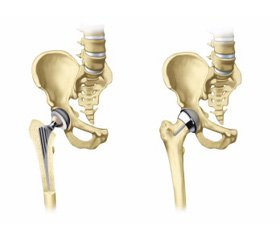Журнал «Травма» Том 16, №2, 2015
Вернуться к номеру
Arthroplasty of the proximal femur for bone tumors
Авторы: Babosha V.A., Cheerakh Y.S., Solonitsyn Y.A. - Donetsk Scientific and Practical Center of Traumatology and Orthopedics
Рубрики: Травматология и ортопедия
Разделы: Клинические исследования
Версия для печати
Introduction. Proximal femur is one of the most frequent locations of bone tumors. So, according to our data malignant tumors of this localization is 32.2% of all malignant tumors of the femur and 14.46% of tumors of the musculoskeletal system. Diagnosis of this lesion is extremely difficult in view of the anatomical structure and distorted clinical picture. Recent advances in the diagnosis, namely, the use of computer and magnetic resonance imaging can detect early stages of cancer. In addition, they allow you to objectively assess the extent of tumor spread and put the indications for breast-conserving surgery or disarticulation.
Objective: Examine the immediate and long-term results after total proximal femur in the defeat tumors of different nosology.
Materials and methods. Over the past 10 years we have conducted arthroplasty of the proximal femur in 43 patients with various tumor lesions. The age of patients ranged from 14 to 77 years. The primary clinical manifestations of lesions of the proximal femur were dependent on nosology of the tumor, but patients always complained of pain in the knee joint (referred pain). For the survey used conventional standard radiographs in two projections, SKT and MRI that allows detailed set of tumor spread and its relation to vessels and nerve trunks. All patients underwent preoperative tumor biopsies: by trocar or open when acting under the skin soft tissue component. To replace the formed defect of the femoral prosthesis used various kinds.
Results and discussion. Initial signs of neoplastic lesions of the proximal femur as malignant and benign processes rather erased. Difficult to diagnose referred pain in the knee joint which is two or three months or more postpones the establishment of a true diagnosis. This term is often increased in view of weak knowledge of radiographic bone tumors. In this regard, more than half (30) of our patients were admitted to the clinic with a pathological fracture of the neck or trochanteric region.19 patients with malignant tumor of proximal part of the process died in the first year after surgery, this four patients with chondrosarcoma, one with osteosarcoma and 14 - metastatic cancer. 6 patients lived 2 years after joint replacement, 7 three years. All died from metastases mainly to the lungs. In benign tumor process, all patients are alive, go without additional support. When hemiarthroplasty after exercise, patients complain of increased pain in the hip.
Conclusions. The results of arthroplasty of the proximal femur showed that in the process of malignant tumor outcome depends on the stage of tumor spread. Apparently, when the first and second stage arthroplasty would give a good result at the third - it only improves for a while quality of life. In cases of benign tumor process any joint replacement restores the ability to work, normalizes the quality of life of patients.

